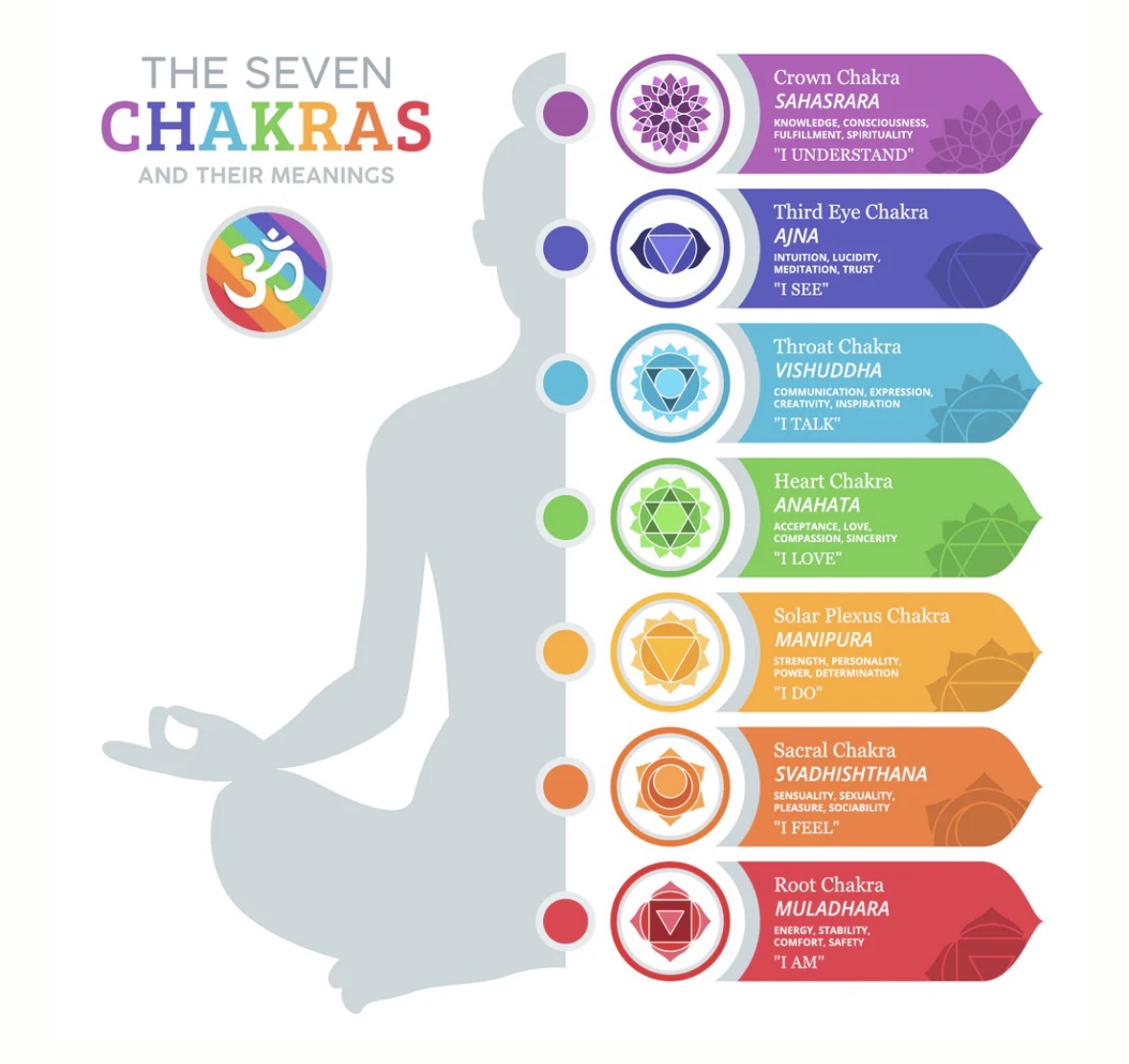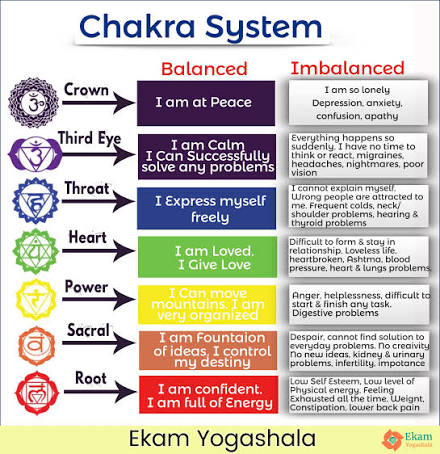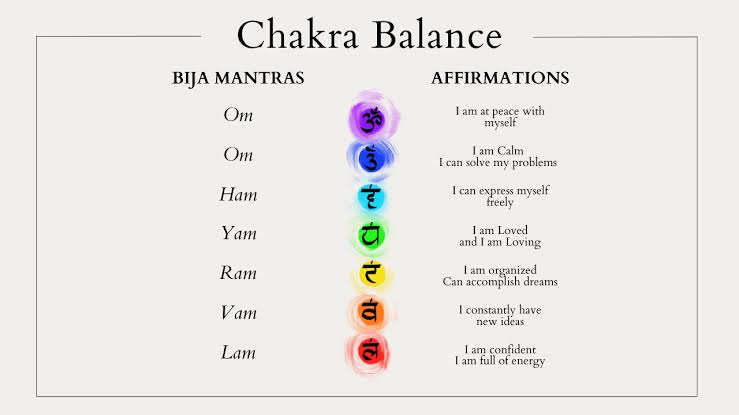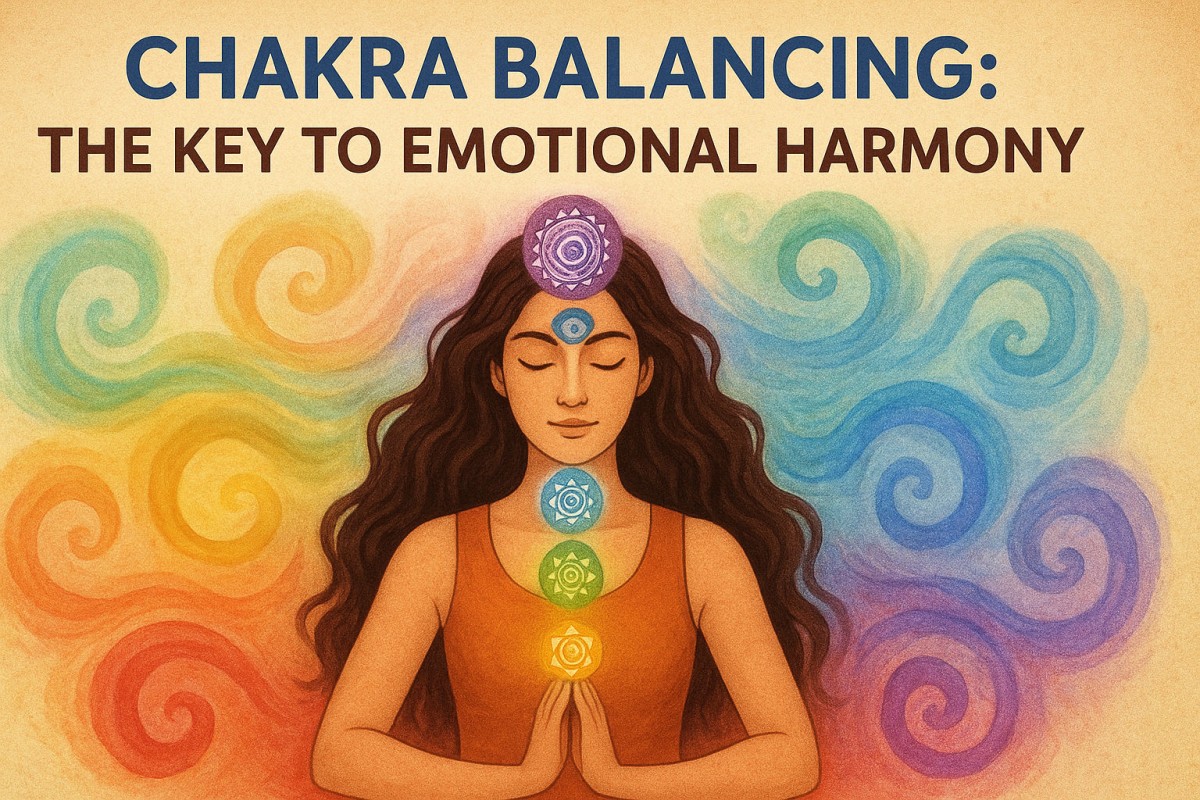Everyone struggles with constant work responsibilities, and personal problems and ongoing disturbances make them emotionally unstable and disconnected from real lives. The traditional practice of ‘Chakra Balancing’ plays a significant role in rebuilding the balance between mind, body, and spirit by making the body’s energy centers more accessible, allowing individuals to feel relaxed, clear-headed, and connected with themselves and others.
Chakras: The Body’s Energy Pathways
1. They are mostly characterized by vital energy sources that affect physical, emotional, and spiritual functions.
2. There are seven chakras that are situated within the spine from the base to the top of the head that regulate different components of well-being, ranging from emotional comfort to innovation, communication, and awareness.
3. The root chakra, also known as Muladhara, signifies protection, steadiness, and humility.
4. The sacral chakra, also known as Svadhisthana, is located below the navel and is related to creativity, emotional intelligence, and interpersonal relationships.
5. The solar plexus chakra, known as Manipura, has been located in the stomach area that governs self-esteem and personal strength.
6. The heart chakra, also called Anahata, is located in the middle of the chest and connects to affection, empathy, and emotional support.
7. Throat Chakra, known as Vishuddha, which is suitable in the throat area that manages expression of thoughts and feelings.
8. The Third Eye Chakra, known as Ajna, is situated between the eyebrows and is related to the sixth sense, insight, and understanding.
9. The crown chakra, also known as Sahasrara, is located at the top of the head and is connected with higher consciousness and self-awareness. 
When Your Chakras Are Out of Balance: Emotional Effects Explained
As each chakra governs a variety of emotional states, when one of them becomes unstable, it can display as inner turmoil or psychological distress.
1. When the root chakra becomes blocked, it can result in the individual being anxious, doubtful, and detached from the environment.
2. A disharmonious sacral chakra can cause mood disturbances, self-blame, and difficulty finding joy in daily life.
3. Blocked Solar Plexus Chakra can lead to low self-confidence and worry about making mistakes.
4. When the heart chakra becomes closed, it can make an individual feel isolated and resentful and not easily forgive others.
5. Throat Chakra problems can result in difficulty expressing oneself and feeling misunderstood by others.
6. Third Eye Chakra blockages can bring poor concentration, lack of clarity, and uncertainty about purpose.
7. A closed crown chakra can make an individual feel confused regarding sense of purpose and emotional numbness. 
Simple Steps for Chakra Healing and Alignment
1. Meditation can help individuals to sit calmly, maintain concentration on breath, and imagine light passing through each chakra as energy flows smoothly.
2. Practicing affirmation in the form of saying positive statements that correspond with each chakra.
3. Engaging in traditional yogic practices such as mountain pose for grounding, bridge pose for heart, and child pose for calm to reestablish harmony.
4. Breathing exercises help to clear blockages and improve energy circulation throughout the body.
5. Chanting or listening to specific frequencies can restore vibrational balance.
6. Wearing certain crystals such as red stones for the root chakra, green jade for the heart, and amethyst for the crown chakra.
7. Consuming fresh foods, remaining hydrated, daily reflection through journaling, and relaxing in nature helps to activate energetic alignment. 
Conclusion
Chakra balancing helps to decrease secretion of stress hormones, develop better coping strategies, foster compassion, improve motivation, and enhance spiritual growth. There are also various ways to realign unstable chakras, such as meditation, breathing exercises, yoga, sound therapy, aromatherapy by using oils including lavender, sandalwood, and peppermint, and positive affirmations.
